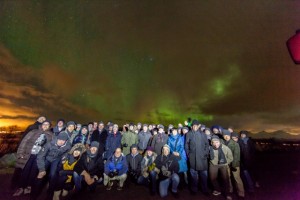CEOS was established in September, 1984 in response to a recommendation from a Panel of Experts on Remote Sensing from Space and set up under the aegis of the G7 Economic Summit of Industrial Nations Working Group on Growth, Technology, and Employment. This Panel recognized the multidisciplinary nature of space-based Earth observations and the value of coordinating international Earth observation efforts to benefit society.
Accordingly, the original function of CEOS was to coordinate and harmonize Earth observations to make it easier for the user community to access and use data. CEOS initially focused on interoperability, common data formats, the inter-calibration of instruments, and common validation and inter-comparison of products. However, over time, the circumstances surrounding the collection and use of space-based Earth observations have changed.
- The number of Earth-observing satellites has vastly increased.
- Onboard instruments are more complex and are capable of collecting new types of data in ever-growing volumes.
- The user community has expanded and become more diverse as different data types become available and new applications for Earth observations are developed.
- Users have become more organized, forming several international bodies that coordinate and levy Earth observation requirements.
In response to this changing environment, CEOS has evolved, becoming more complex and expanding the number and scope of its activities. In addition to its original charge, CEOS now focuses on validated requirements levied by external organizations, works closely with other satellite coordinating bodies (e.g. the Coordination Group for Meteorological Satellites, CGMS), and continues its role as the primary forum for international coordination of space-based Earth observations.
Over the past three decades, CEOS has significantly contributed to the advancement of space-based Earth observation community efforts. CEOS Agencies communicate, collaborate, and exchange information on Earth observation activities, spurring useful partnerships such as the Integrated Global Observing Strategy (IGOS). CEOS played an influential role in the establishment and ongoing development of the Group on Earth Observations (GEO) and the Global Earth Observation System of Systems (GEOSS). CEOS, through the major investments made by CEOS Agencies in developing the space segment of GEOSS, continues to provide space-based Earth observations in support of GEOSS implementation.
CEOS Agencies work together to launch multi-agency collaborative missions, and such cooperative efforts have highly benefited users all around the world. CEOS also provides an established means of communicating with external organizations, enabling CEOS to understand and act upon these organizations’ Earth observation needs and requirements.
CEOS employs three Governing Documents that guide its work:
- The CEOS Strategic Guidance document, which articulates the overarching long-term (7-10 years) purpose and goals of CEOS
- The CEOS Governance and Processes document, which provides guidelines on the structure, operations, and processes CEOS employs to achieve its goals
- A three-year rolling CEOS Work Plan, which sets forth near-term actions to achieve the goals outlined in the CEOS Strategic Guidance document
All the above mentioned documents are available under Governing Documents. Please review these documents for detailed information about CEOS.
